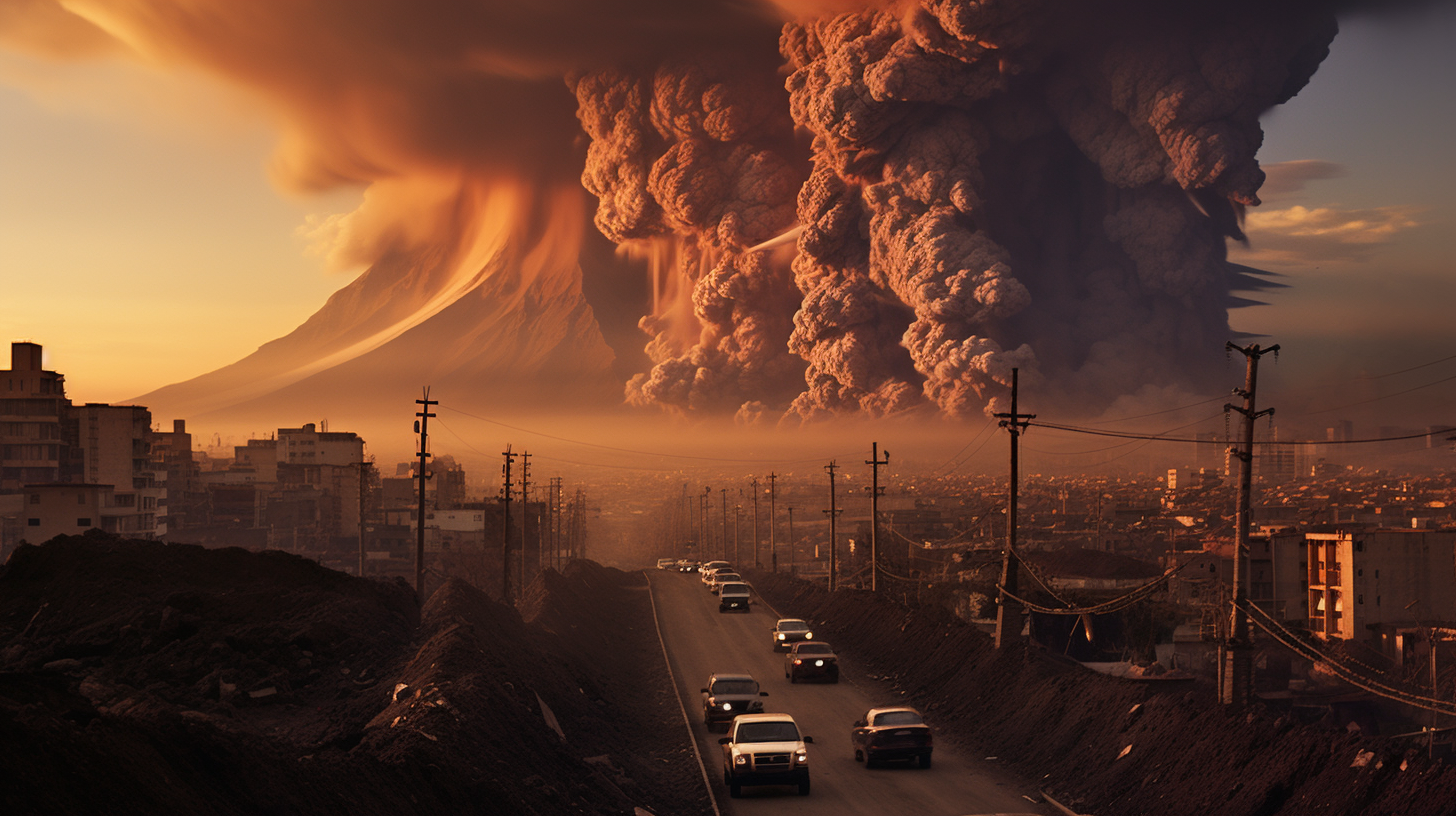The landscape is a canvas of desolation, a somber palette of greys, as we tread the remnants of a civilization now entombed. Here lies the stark tableau of destruction where once thrived customs, language, and life. This is the tale of cultures claimed by the ferocious might of volcanic eruptions, an account of what becomes of our cultural heritage when the very earth beneath our feet turns against us. It’s a narrative seared into the fabric of our planet, as ancient and enduring as the molten rock itself.
Somewhere, the stark echoes of ancestral chants clasp to the wind, their cadences falling silent as they are smothered in the volcanic fallout. The ‘Echoes in the Ashes’ is not just a metaphorical muse but the literal truth for societies that have perished or been irrevocably transformed by vengeful geysers of lava and ash. They are cautionary tales, etched into history, of Pompeii, of the Minoans on Santorini, or the more recent and poignant memento mori of Montserrat’s Soufriere Hills eruptions. Each, in its wake, leaves a cultural scar – a void where once tradition pulsed vivaciously.
The aftermath of these eruptions portends more than a loss of life. They speak to a dismemberment of intangible cultural heritages – the unrecorded histories, the oral traditions, the communal practices that bind a people to their identity. They are about towns, temples, and texts devoured, not solely by the blazing heat of pyroclastic flows but by the sheer oblivion of cultural memory that follows. Consider the fate of the indigenous Ainu of Japan, whose already threatened culture faces potential erasure under the relentless threats from their volcanic homeland.
In light of such catastrophes, we observe a haunting embrace between the natural world and cultural domains. Sometimes, nature’s fury is impartial, but at other times, it seems as if the very wrath of the earth is directed at the heart of our cultures – as if to remind us of our fragility in this grand and indifferent theater of existence. This, while a phenomenon of natural disaster, could be interpreted as the planet’s involuntary pushback against the onslaught it faces from humanity’s environmental neglect.
To readers today, these events might unfold as a series of environmental articles, data points, or perhaps even as a distant tragedy. Yet, the implications are immediate and shattering for those whose worlds are upheaved. The interplay between culture and cataclysm forms a potent narrative, one that can offer lessons to those living in neglect of environmental balance. It’s a clarion call to realize that while the fabric of culture is enduring, it is not indestructible and must be safeguarded from not just social but environmental threats as well.
While the landscapes eventually heal, regrowth grasping hold, and new life stirring beneath the ashes, the cultures and the memories they carried often do not recover. They transition into lore, into archaeological footnotes—a poignant reminder that even as we face the prospect of dystopian decay brought upon by climate disasters, the most significant loss may well be the stories we no longer can tell.
The lingering question amidst these sobering tales is not just about the cultures lost; it is also a poignant contemplation of what current civilizations stand on the precipice of being swallowed whole by the similar fates if climate action remains an ideal rather than an implementation. The timbre of this narrative is set in the minor key, and it invites us, as a species, to listen closer, to act swiftly.
And does the world heed these echoes in the ashes? Will we allow them to resonate as mere historical curiosities or mobilize them as harbingers of reflective action? The choice remains our collective burden. As the planet warms and the frequency of natural disasters is set to increase, we must recognize the potential repeat of history’s tragic verses.
In the final account, the article extends beyond retelling the calamities of the past. It’s a contemporary saga that warns of futures prematurely concluded, of identities extinguished before their time. It calls us to salvage hope from narratives of despair and to act upon the prescient lament of histories lost. For what are these stories, these ‘Echoes in the Ashes,’ if not remnants calling across time, urging us to not let neglect, environmental or cultural, guide the pen of our generation’s story?
